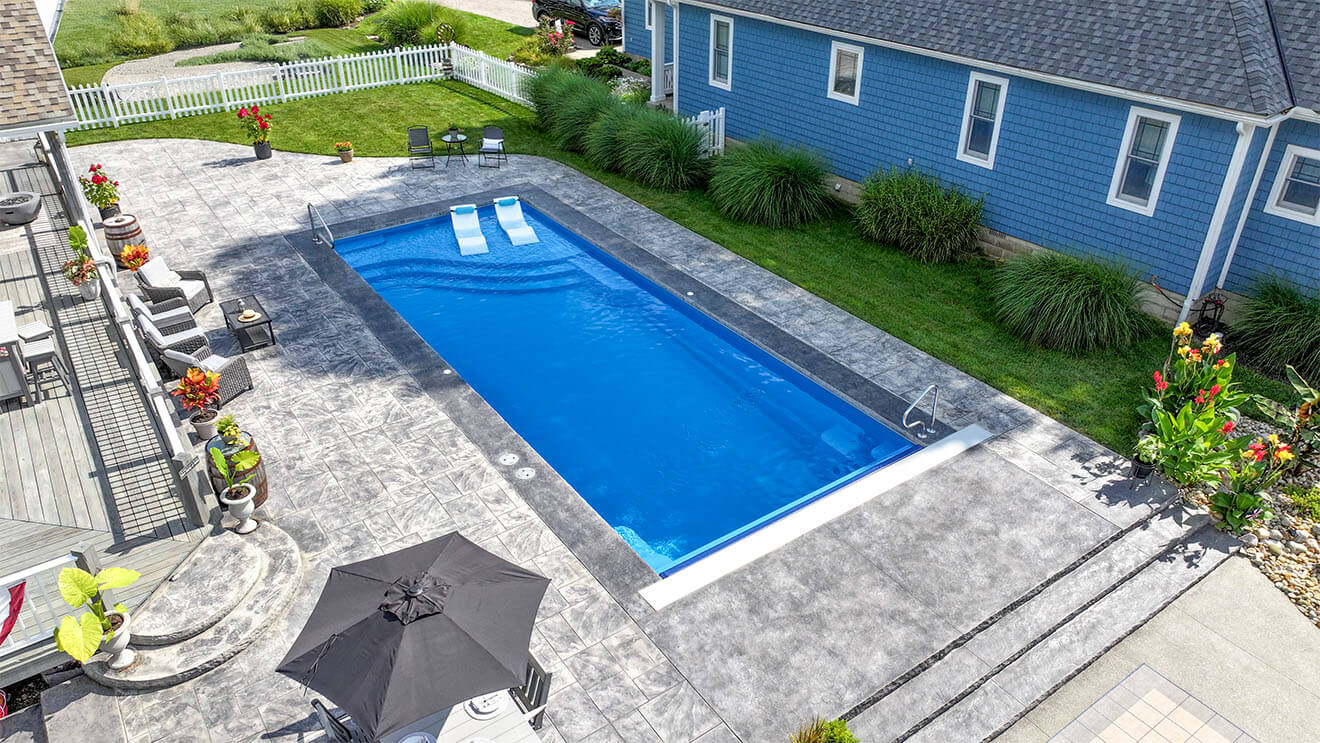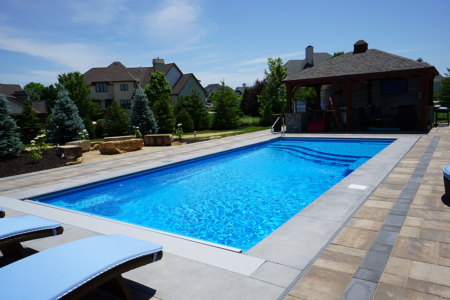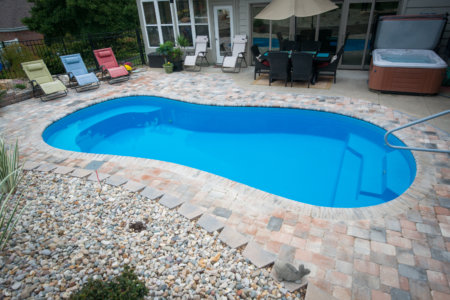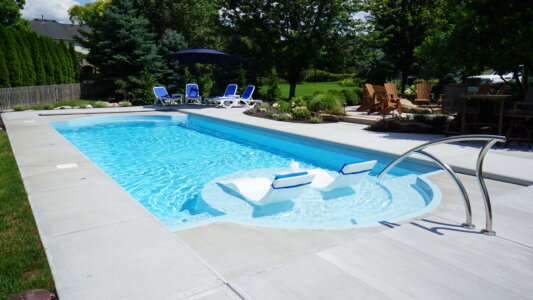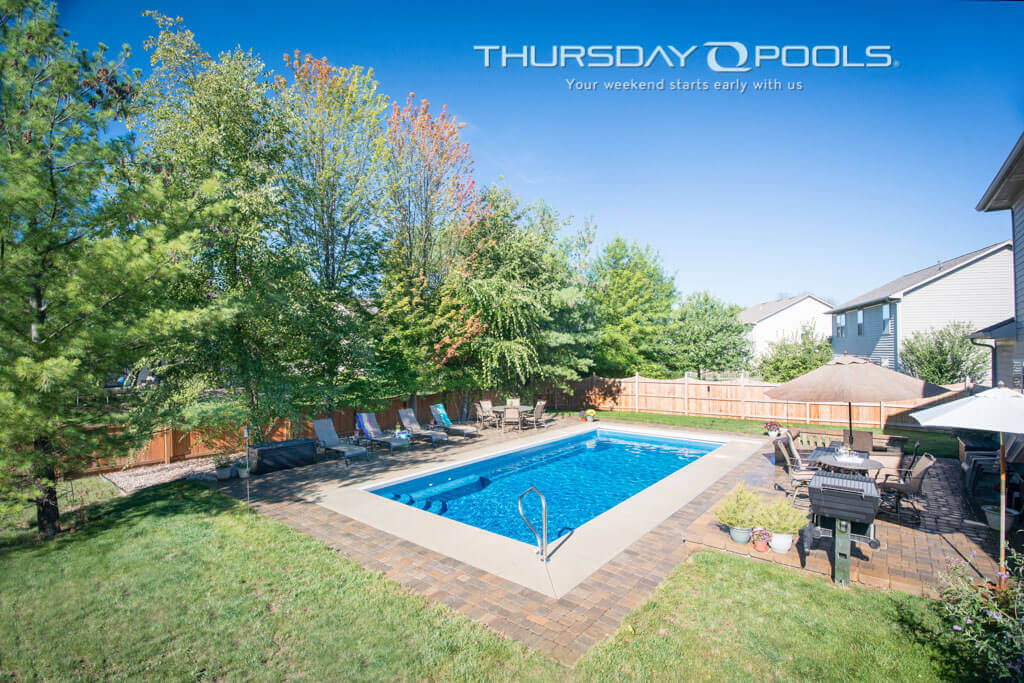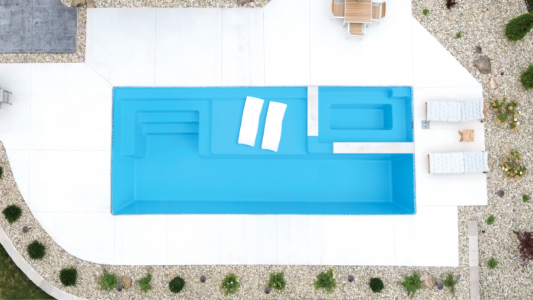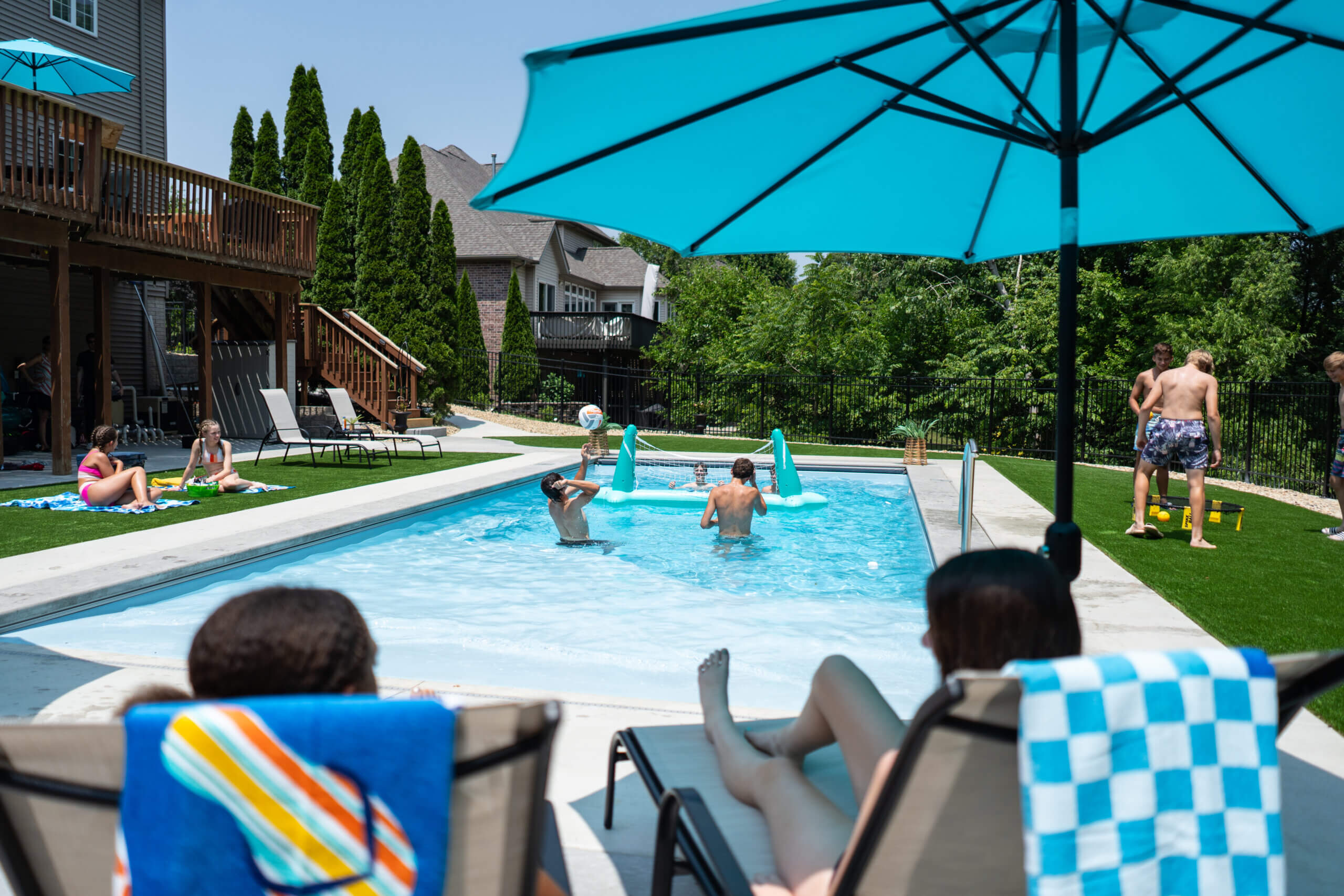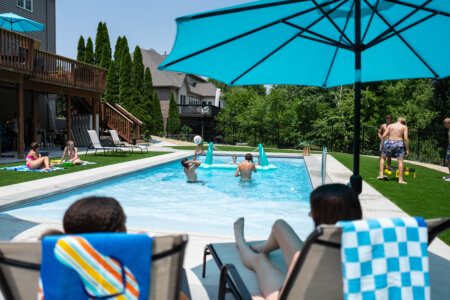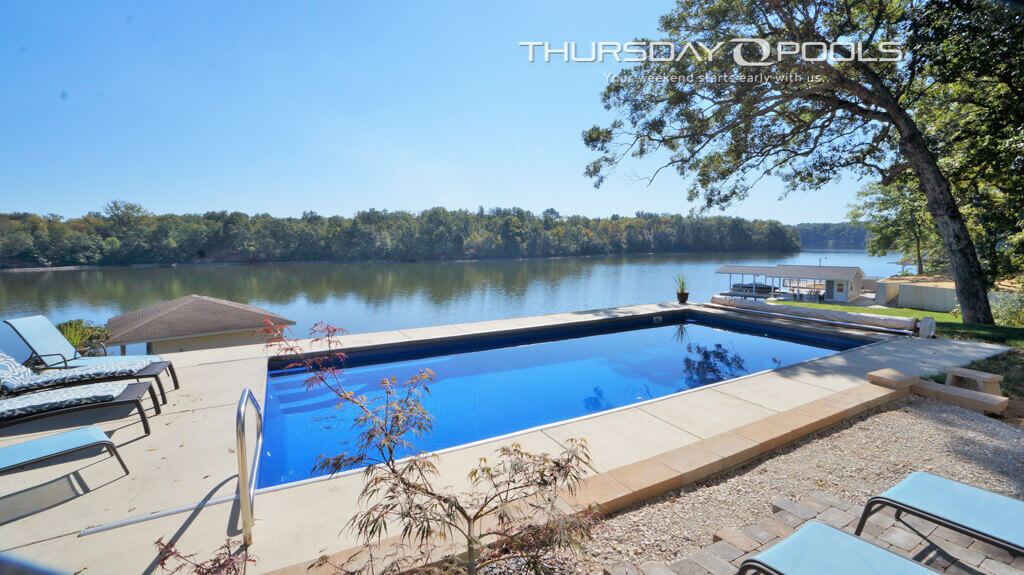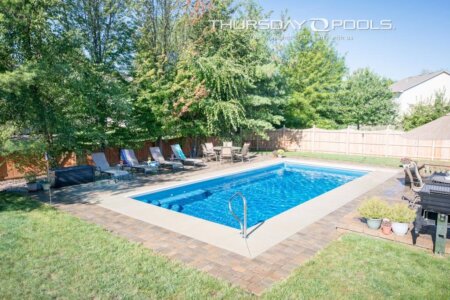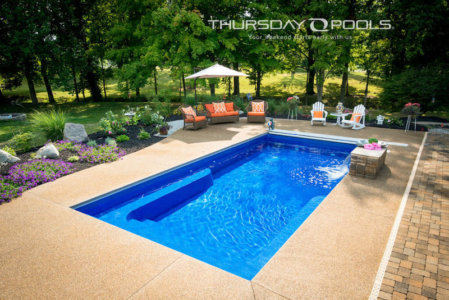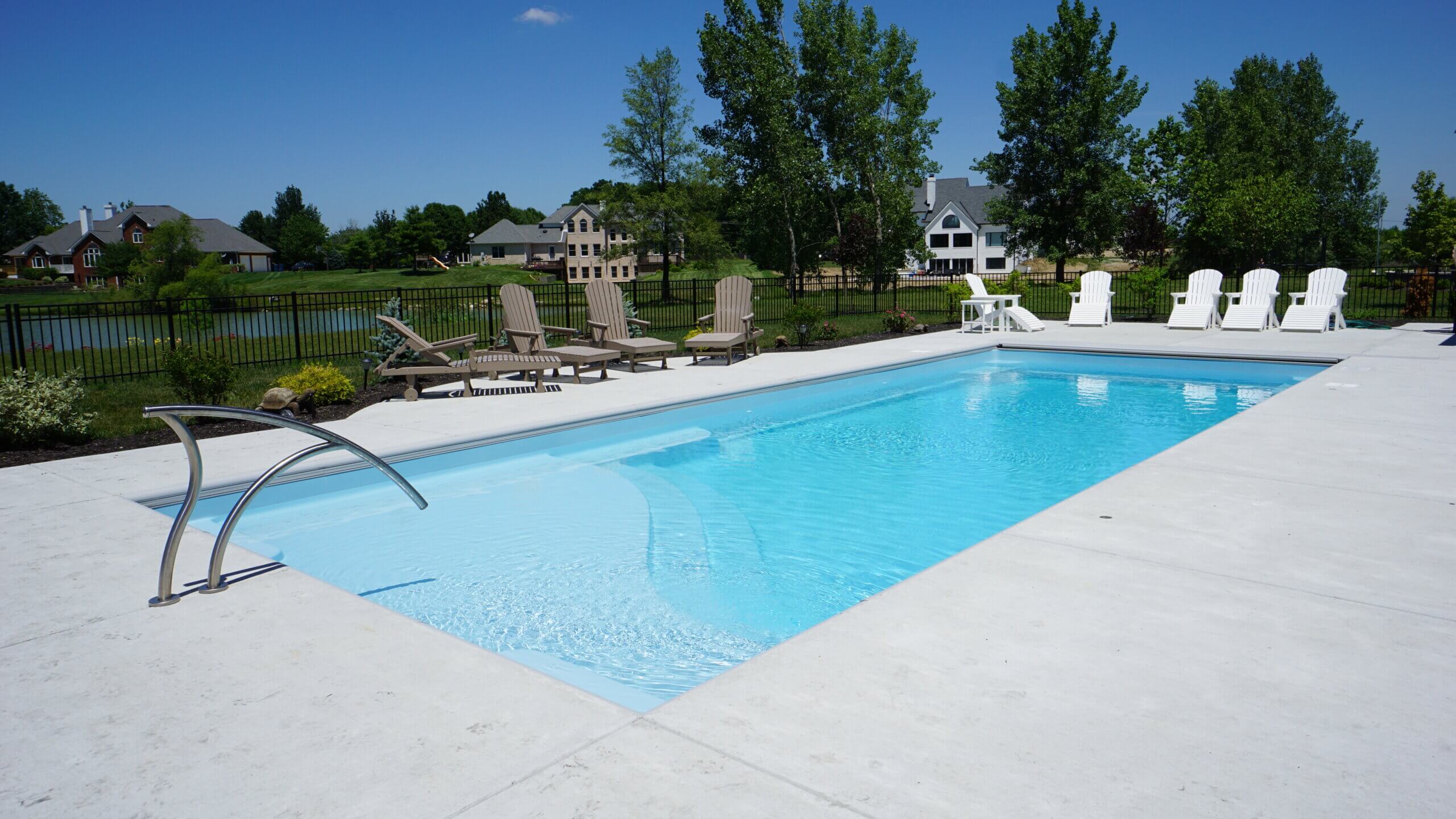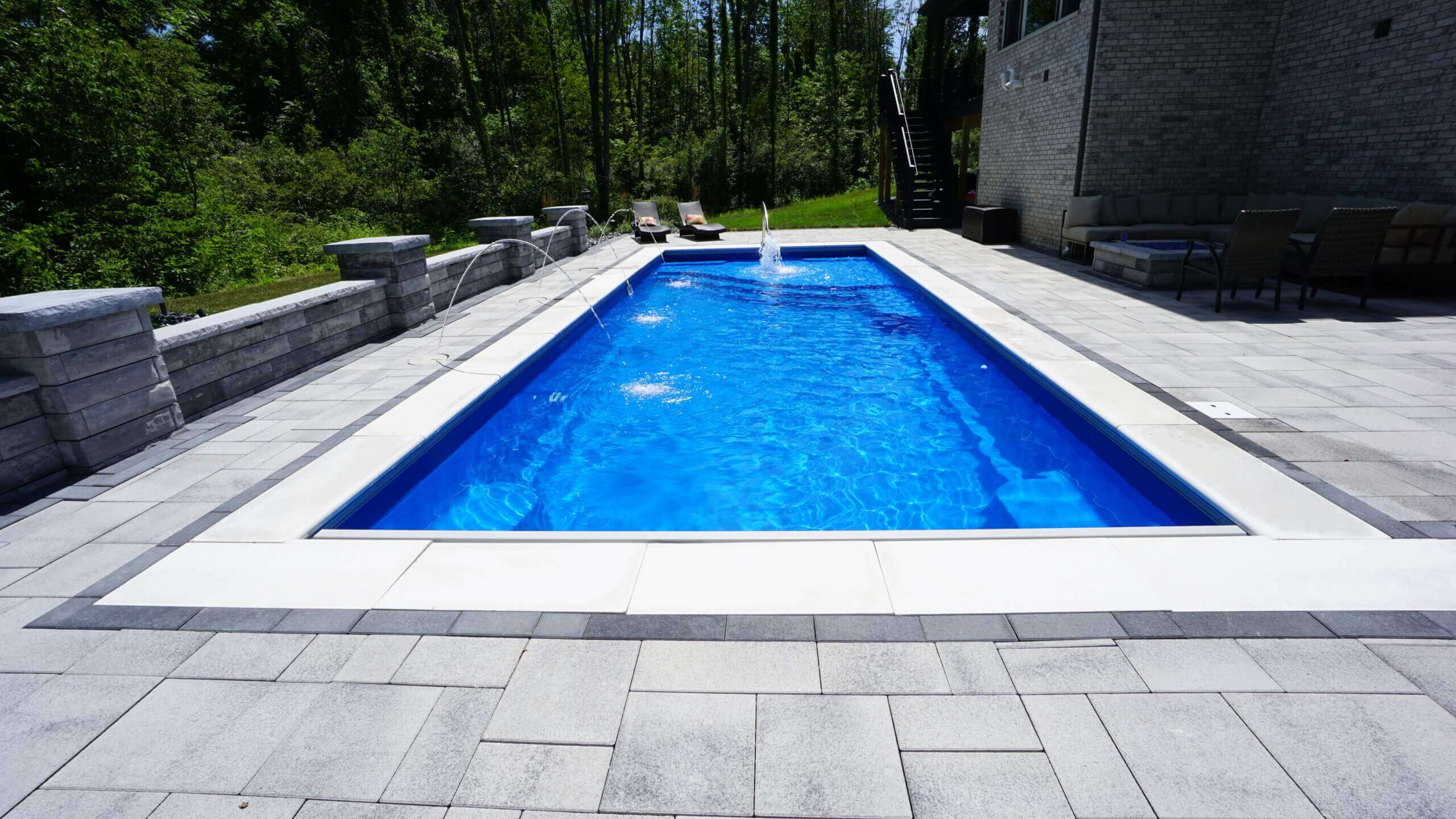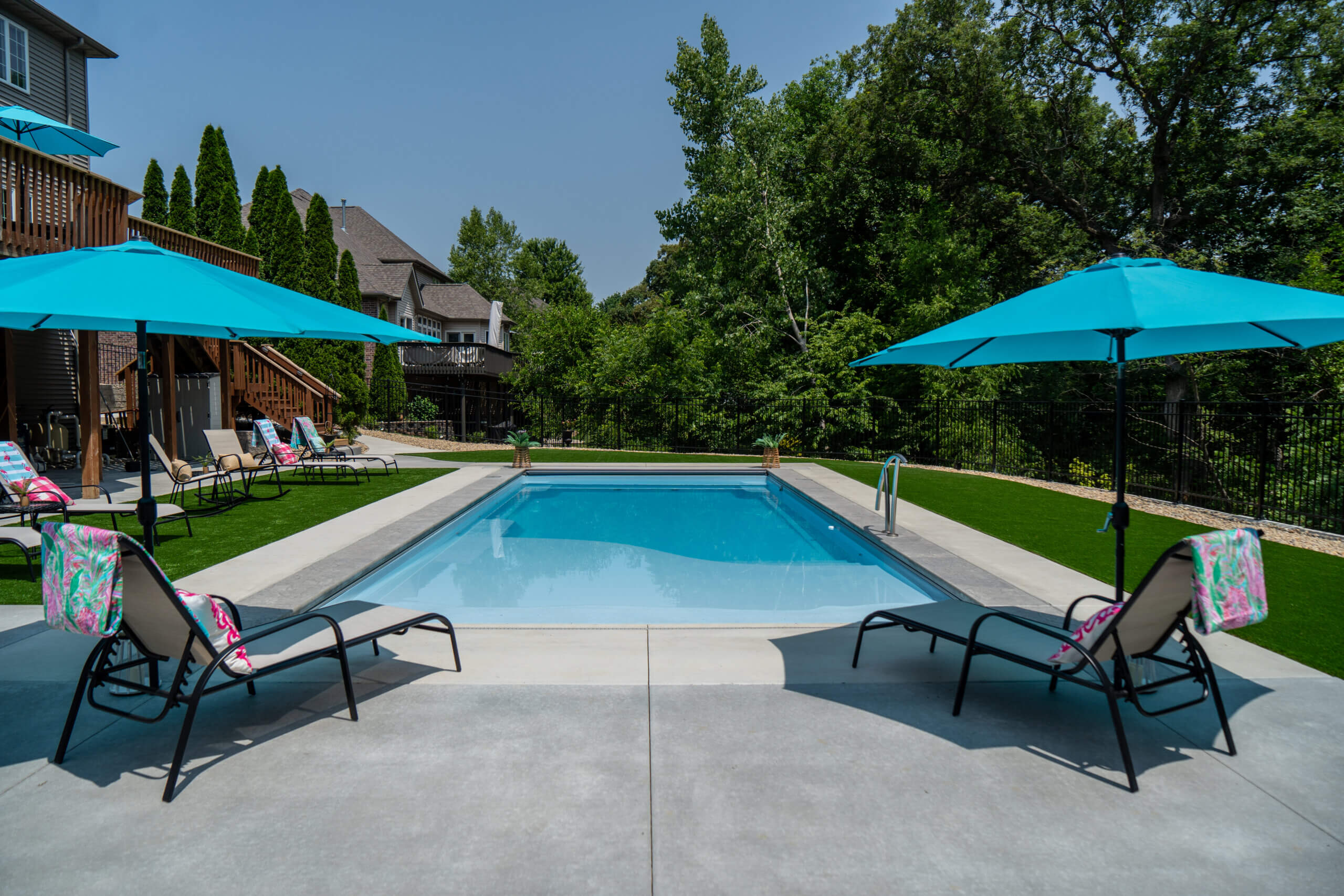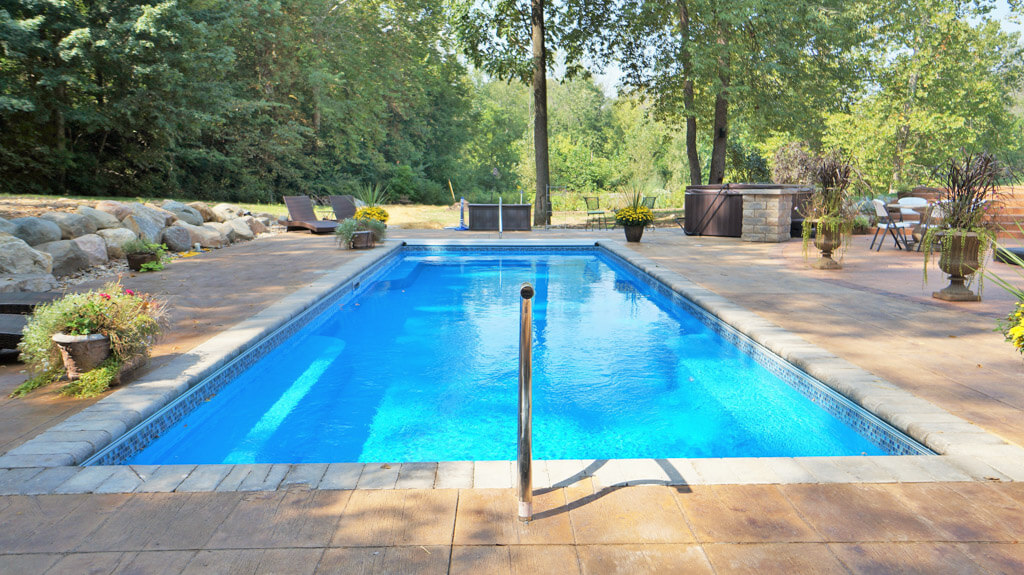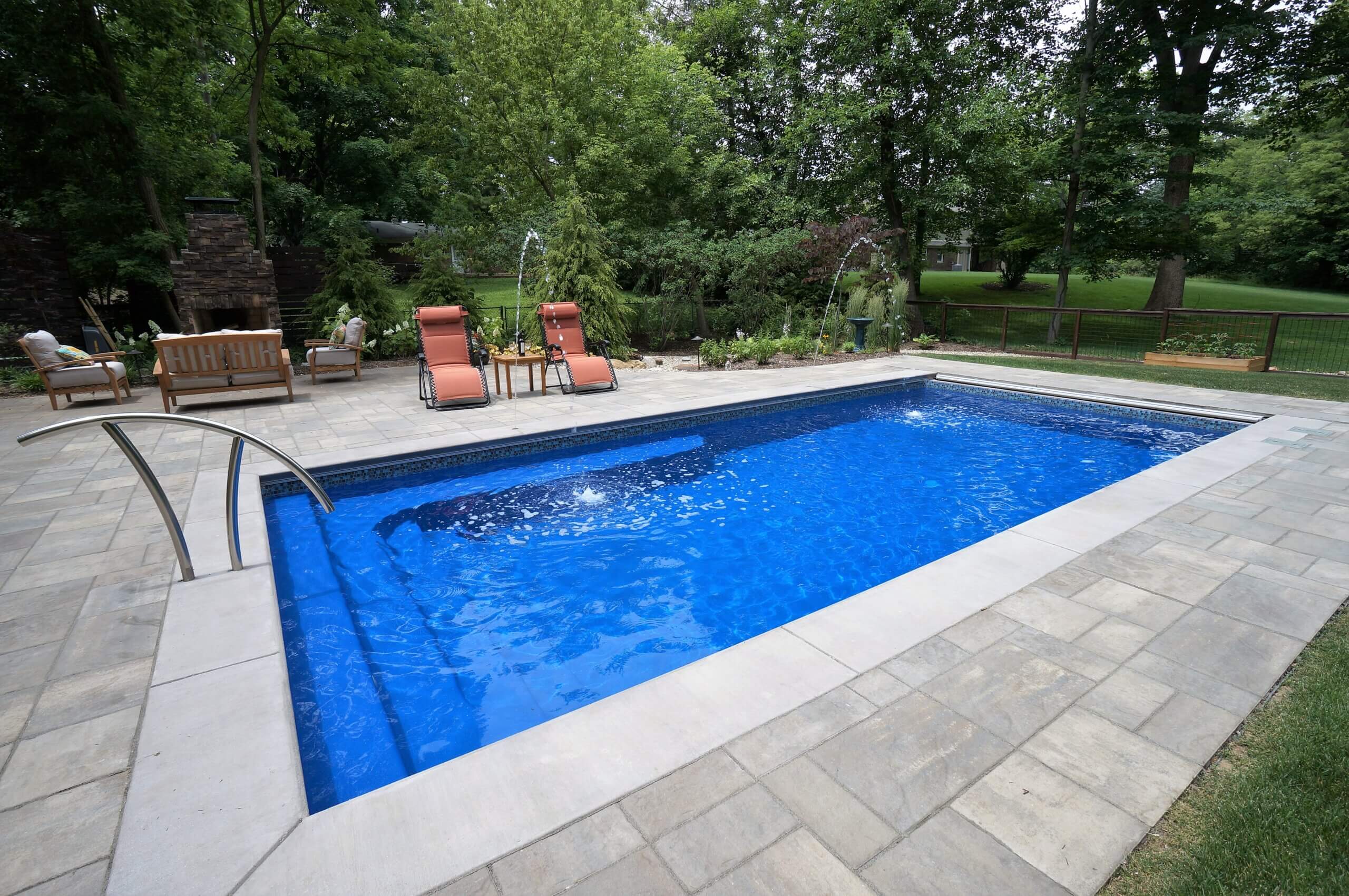Towering evergreens, mountain views, and crisp, clean air—Washington’s natural beauty makes it the perfect backdrop for a backyard pool. The Pacific Northwest might be known for its misty mornings and cooler climate, but summer brings warm sunny days that invite you into a pool. If you’re researching fiberglass pool cost in Washington, it’s important to understand how regional conditions can influence your overall investment. From rocky terrain around Spokane to loamy soils in the Puget Sound region, and whether you’re tucked into a wooded lot near Bellingham or enjoying open space around the Tri-Cities, local geography and site prep needs play a crucial role in shaping your pool installation costs.
Customization is at the heart of creating a poolscape that fits your lifestyle, and your design choices can have a significant impact on cost. Add-ons like an integrated spa, heating system, or expansive patio space can transform your yard, but they also affect your bottom line. With local permitting and fencing regulations to budget for, too, the planning process can quickly become complex. Choosing a trusted Washington fiberglass pool dealer can help you navigate these factors and bring your backyard vision to life on time and on budget.
What’s the Average Fiberglass Pool Cost in Washington? Survey Says…
Thursday Pools collected local cost data through a 2025 survey of our independent dealers across Washington to help you understand the average cost of installing a fiberglass pool in the Evergreen State. If you’re just beginning your research into fiberglass pool pricing in your area, this is the place to start. Our goal is to give you a realistic, data-backed snapshot of what it might cost to turn your outdoor space into a private backyard retreat.
AVERAGE WASHINGTON FIBERGLASS POOL INSTALLATION BY SIZE |
|||
|---|---|---|---|
| Pool Type | Small Fiberglass Pools | Medium Fiberglass Pools | Large Fiberglass Pools |
| Size Range | Up to 26 ft Long or 400 ft² | 26 to 34 ft Long or 400 to 600 ft² | 35 ft and Longer or 600+ ft² |
| Average Cost | $110,000 | $120,000 | $130,000 |
Think of these numbers as mile markers, not a final destination. Washington’s landscape is as varied as its weather—dense tree coverage, hilly terrain, and high water tables can all affect your project scope and pricing. Your personal design choices and pool model preference play a big role, too. The best way to move from average estimates to a custom quote tailored to your yard is to connect with a local Thursday Pools dealer who knows the terrain and has experience using Washington’s natural beauty to create a staycation destination.
Estimated Installation Costs for Popular Fiberglass Pool Designs in Washington
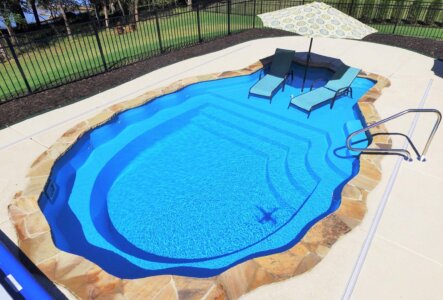
PEARL (15’ x 25’)
Compact, elegant, and full of features, the Pearl is a standout choice for Washington homeowners who want luxury without sacrificing yard space. Its petite footprint is ideal for tighter urban lots in areas like Seattle, Tacoma, or Bellevue, where smart design and space efficiency matter. The built-in tanning ledge and wraparound bench seating elevate comfort, while the scalloped shape adds unique visual interest.
According to our 2025 survey of Thursday Pools dealers in Washington, the average cost for a standard installation of the Pearl or other compact fiberglass pools up to 26 feet long or 400 square feet is $110,000.
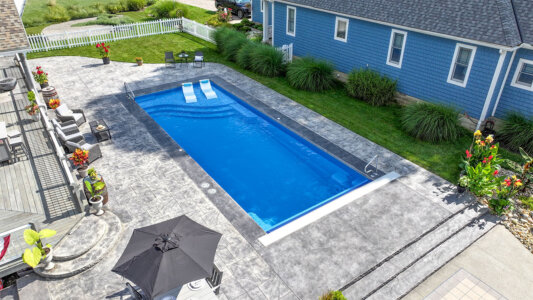
ASPEN (14’ x 30’)
The 30-foot-long Aspen is a mid-sized pool that delivers big on comfort and versatility. Its generous tanning ledge, full-length entry steps, and deep-end swim-outs create a space to host both active swimmers and laid-back loungers. With its sleek rectangular design, the Aspen fits beautifully into most mid-sized properties across Washington, from suburban neighborhoods around Spokane to scenic backyards of Olympia.
Based on Washington dealer survey responses, the average cost for a standard installation of the Aspen or similar fiberglass pools between 26 and 34 feet or 400 to 600 square feet is $120,000.
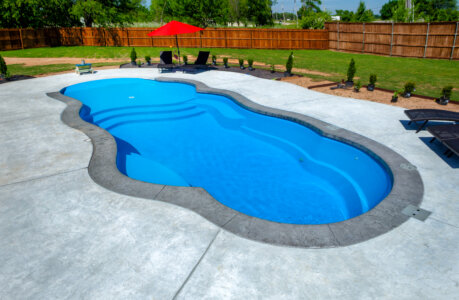
SANDAL (16’ x 39’)
The Sandal offers a true resort-style experience in your backyard. Featuring a sloping beach-entry design, this pool invites you to walk in like you would at the shoreline. It’s ideal for families, sunbathers, or anyone seeking a touch of luxury, and is a bold choice for expansive properties in rural or high-end neighborhoods near places like Redmond, Vancouver, or Walla Walla. With its gentle slope, integrated lounging area, and spacious swim zone, the Sandal is as stylish as it is functional.
According to our survey of Washington Thursday Pools dealers, the average cost for a standard installation of the Sandal or other large fiberglass pools 35 feet or 600 square feet and larger is $130,000.
Evaluating Your Washington Property for a Fiberglass Pool Installation
Washington’s dramatic landscapes offer beautiful settings for fiberglass pools, but can also present unique installation challenges. Western areas like Seattle, Tacoma, and Everett often have dense clay soils and high water tables, which can complicate excavation and require added drainage or engineering work. Central and Eastern Washington homes around Spokane, Yakima, and the Tri-Cities can have rockier terrain or loamy soils that may require different excavation strategies or stabilization efforts.
Yard layout and topography are other significant cost factors. Sloped lots are common across the state, particularly near the Cascades or in lakefront communities, and may need grading or retaining walls to create a level base for your pool shell.
Access issues can also impact installation costs. In urban or older neighborhoods such as Seattle’s Capitol Hill or Queen Anne, tight streets and narrow lots with limited access might call for renting a crane to position the pool shell. Even in more suburban or rural settings, landscaping, trees, and terrain can add complexity.
Working with a local pool expert who knows Washington’s varied conditions ensures your installation goes smoothly and helps avoid surprises that could affect your budget or timeline.
Pool Safety Barrier Guidelines for Washington Residential Installations
Washington requires enclosing all pools with a safety barrier at least 4 feet high with a self-closing, self-latching, and outward-swinging gate. These fencing barriers are critical for preventing unauthorized and unsupervised access, especially by young children or family pets.
Local municipalities may enforce additional pool fencing requirements to budget for, such as mandating higher barriers, stipulating certain materials, or implementing regulations on allowed fence openings.
It is essential to verify the exact Washington code requirements or local HOA regulations before construction. Consulting with an experienced fiberglass pool professional familiar with Washington’s regulations can help ensure your barrier meets all safety standards, protects your loved ones, and prevents costly compliance issues.
Washington homeowners can expect to spend $11,600 for a 300-linear-foot pool fence, based on responses to our 2025 survey of local independent Thursday Pools dealers.
Elevate Your Washington Fiberglass Pool with Popular Upgrades
Transforming your yard and elevating your fiberglass pool means more than installing the shell. It’s about customizing features that fit your lifestyle and preferences. While not essential, these popular add-ons can enhance comfort, convenience, and style to help make the most of your outdoor space. Drawing from insights shared by Thursday Pools’ trusted dealers across the state, here’s a look at some of the most in-demand upgrades and their average costs to guide your planning.
Pool Heating & Water Care Solutions
Pool Heater Average Cost in Washington: $8,000
Extend your swimming season by keeping pool water warm even during chilly Northwest evenings. A reliable heater ensures your pool stays inviting when temperatures drop.
UV Filtration System Average Cost in Washington: $2,300
Washington’s abundant rain and organic debris can affect water clarity. UV filtration helps reduce chemical use by neutralizing bacteria and algae, leaving your pool sparkling clean with less maintenance.
Automatic Pool Cleaner and Vacuum System Average Cost in Washington: $2,000
Save time on pool upkeep with an automatic cleaning system designed to keep your pool spotless even when you’re busy elsewhere.
Pool Automation and Smart Control System Average Cost in Washington: $8,400
Manage your pool’s temperature, filtration, and lighting remotely with smart controls—perfect for Washington homeowners who want seamless pool management at their fingertips.
Pool Covering & Safety Options
Automatic Pool Cover Average Cost in Washington: $16,000
Enhance safety and energy efficiency with an automatic cover that protects your pool from debris and reduces heat loss.
Manual Safety Pool Cover Average Cost in Washington: $4,900
Affordably secure your pool from unwanted access and keep out leaves, dirt, and other debris.
Poolside Surfaces & Landscape Enhancements
Concrete Patio (Approx. 1,200 sq. ft.) Average Cost in Washington: $7,100
Durable and weather-resistant, concrete patios provide a stable poolside surface that withstands Northwest rain and temperature swings.
Paver Patio (Approx. 1,200 sq. ft.) Average Cost in Washington: $9,900
Choose from natural stone, brick, or concrete pavers to add texture and slip resistance while creating a stylish, safe outdoor space.
Landscaping Average Cost in Washington: $16,000
Integrate native plants and thoughtful landscaping to complement your pool area and enhance aesthetic appeal.
Distinctive Features & Elegant Touches
Specialty Waterline Tile Average Cost in Washington: $6,500
Add a custom, elegant touch to your pool’s edge with decorative waterline tiles, elevating the overall look of your backyard retreat.
LED Pool Lights Average Cost in Washington: $2,400 per light
Set the perfect ambiance for evening swims with energy-efficient LED lighting in white or color-changing options.
Deck Jets Average Cost in Washington: $5,000 per jet
Introduce flowing water features that create graceful arcs and soothing sounds around your pool deck.
Bubblers Average Cost in Washington: $5,200 per bubbler
Perfect for shallow areas or tanning ledges, bubblers add a playful and relaxing splashing water effect.
Cascading Waterfalls Average Cost in Washington: $13,700
Bring the tranquil sound of flowing water to your backyard with a waterfall feature that doubles as a stunning focal point.
Add-On Spa Average Cost in Washington: $16,000
Create a spa-like experience with a connected spillover spa for relaxation and hydrotherapy benefits.
Recreational Slides & Diving Accessories
Simple Pool Slide Average Cost in Washington: $9,800*
Add family-friendly fun with a straightforward slide designed for safety and enjoyment.
Deluxe Pool Slide Average Cost in Washington: $13,400*
For a more thrilling experience, a deluxe slide offers extra curves and height for added excitement.
Diving Board (Type 1 Diving Pools Only) Average Cost in Washington: $8,200*
Diving boards require pools that meet strict depth and slope criteria. Professional installation and planning are essential for safety and code compliance.
*Thursday Pools strongly advises against including diving boards and slides due to safety concerns. A licensed professional must review any such additions to ensure compliance with local building codes, safety regulations, and manufacturer guidelines. Not all fiberglass pool models are suitable for diving or slide use. Homeowners and installers are responsible for proper installation and usage. Always prioritize safety and consult a qualified expert before adding diving or sliding features to your pool.
Create Your Perfect Washington Backyard Retreat with a Custom Fiberglass Pool
Installing a fiberglass pool in Washington is about more than adding home value. It’s about creating a versatile outdoor space that complements the Pacific Northwest lifestyle. Whether you’re enjoying the lush greenery of the Puget Sound region or the open skies of Eastern Washington, a custom pool offers a haven for relaxation, recreation, and memorable gatherings.
Washington’s diverse climate and landscapes mean that every backyard presents unique opportunities and challenges. Working with a knowledgeable local Thursday Pools dealer ensures your pool design perfectly suits your property’s terrain and your personal preferences.
Start your journey today by using the Thursday Pools Pool Cost Calculator for a realistic pricing estimate, explore the Pool Selector Tool to find the ideal pool design, and connect with a trusted dealer near you when you’re ready.
Get Your Personalized Estimate
